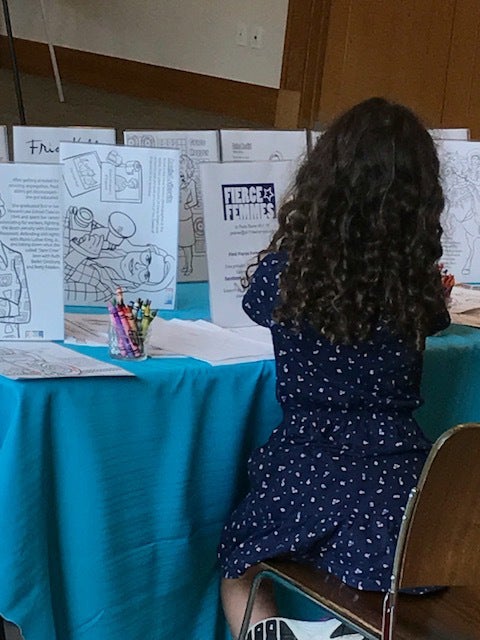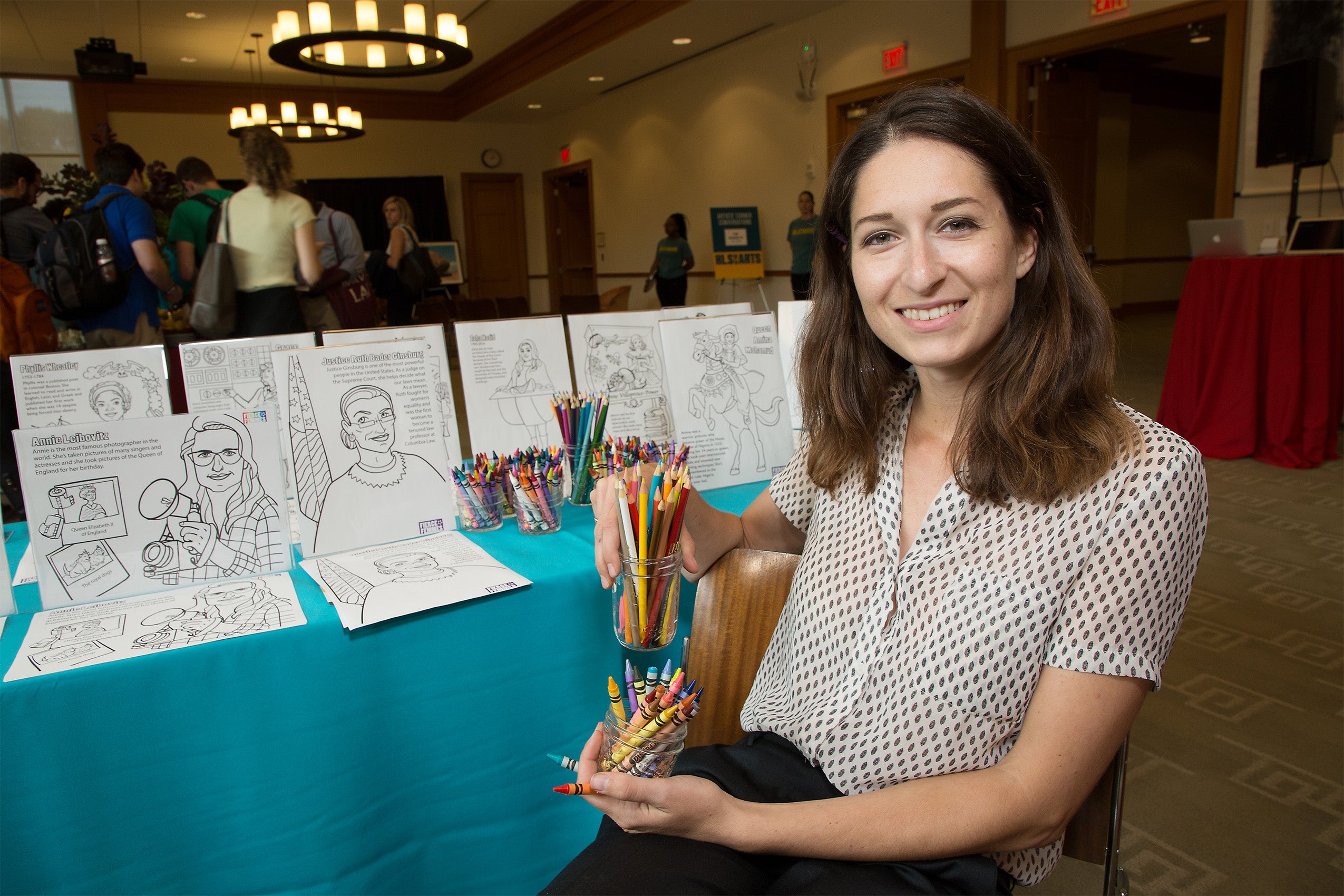At HLS in the Arts this past weekend, Paola Eisner ’19 exhibited a large still life that she painted before she went to college, and pages from a children’s book that she began working on before she started law school. Like these, many of the interests and projects that she pursues today have deeper roots.
Eisner is a first-generation Argentinian-American. “My parents wanted to start a family in a place where their kids would have opportunities and where they could rely on the rule of law to give them a sense of security. So the importance of the rule of law was something that I was aware of for a long time,” she remembers.
While she was earning a B.S. in environmental studies and international relations from Brown University and a B.F.A. from the Rhode Island School of Design, she was an intern in the Rhode Island Attorney General’s Office, where she observed an environmental case that went to the U.S. Supreme Court. Eisner was impressed that a law professor had taken his whole class to Washington, D.C., to see the case. That professor was Richard Lazarus, who teaches environmental law, natural resources Law, Supreme Court advocacy, and torts at HLS. When she saw that Lazarus and HLS “were really focused on hands-on experiences, and following a case that I was interested in as well,” Eisner decided that Harvard Law School might be the right place for her.

At HLS, she has served on the student government and also on the university’s sustainability team; this year, she is president of the Environmental Law Society. Eisner is also looking forward to the programming that the International Arbitration Law Students Association will offer: “It’s a quickly growing field so it’s nice to see a practitioner’s view on the changes that are happening and where the field is going,” she notes.
The environmentalist, internationalist, and law student is, of course, also an artist. Eisner paints, sculpts, works in illustration, graphic and web design, and animation, and does jewelry design. Recently, she has been working with other artists on large-scale installation pieces that sometimes involve welding. “Law is intellectually stimulating, but it’s so intangible,” she observes; “it’s nice to see a project I’m working on get constructed. It’s also a great experience to work as a team, to rely on other people, to plan and strategize for a whole project – something that has helped me in my academic work as well.” Her art and her law studies have connected in interesting ways, she notes, such as the time she created illustrations for a beach access litigation matter, to show the court what different outcomes from the case would look like.

At the Arts Festival, Eisner showed illustrations from a work in progress. “When I was growing up in Texas, I would ask why aren’t there a lot of women in the history books? Why aren’t we learning about women’s accomplishments as well? The answer seemed to be ‘Well, they just haven’t done that much.’ And that wasn’t very satisfying to me.” Since then, “I’ve learned about lots of wonderful, accomplished, strong women to look up to,” Eisner notes, so several years ago she began creating pages for a children’s coloring book featuring women she calls Fierce Femmes — ranging from Ada Lovelace, “a mathematical genius, inventor, and the world’s first computer programmer,” to Sybil Luddington, who “was only 16 when she rode through the night to round up her father’s militia against the British on the eve of the American Revolution. She rode 40 miles, twice as far as Paul Revere!” Eisner’s superheroes include artists Frida Kahlo and Georgia O’Keefe, as well as lawyers Ruth Bader Ginsburg and Pauli Murray. “I developed the project so that my baby sisters and other young kids can have a different experience than I had,” she notes. “There are a lot of women to add.”
Coming full circle, Eisner is from Houston, and although her family escaped the worst of Hurricane Harvey, she was one of several HLS students impacted by the storm. Her work with the Environmental Law Clinic this fall has special meaning; she is now focusing on Hurricane Harvey response work. “The storm was very recent, and the Clinic’s plans have changed quite dramatically, directly in response to what’s needed on the ground. It’s great to be able to get to work on issues so close to my heart.”
